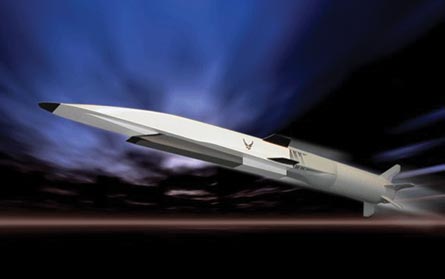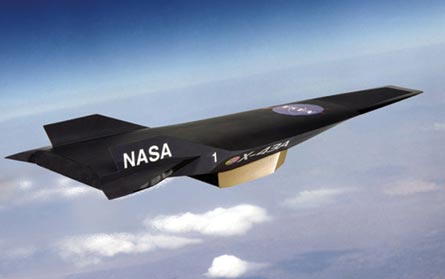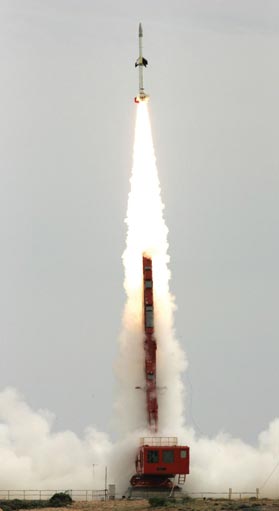As in years past, this year's Farnborough air show will be a celebration of traditional modes of air travel, all "modern" in their own right.
But change is coming, rapidly and from behind the scenes. If some researchers and physicists have their way, moving things through the air could mean something very different in a decade. Or not.
Some experts say the world is less than 10 years away from sending weapons and space cargo to their destination at more than Mach 5 on a regular basis. Others joke that we have been 10 or 15 years away from hypersonic flight for the past 75 years.
|
|---|
What we do know for sure, according to Richard Hallion, hypersonics expert and former senior US Department of Defense air and space security and counterintelligence adviser, is that humans entered the 19th century at around 6mph (9.5km/h), or the speed of an animal-drawn vehicle, the 20th century at the 60mph of a steam locomotive and the 21st century at the 600mph of an intercontinental jetliner. And therefore, we are due for an increase, Hallion says.
Supporters of hypersonics say the Pentagon and Boeing researchers took a major leap forward in hypersonic achievement on 26 May, with the longest-ever supersonic combustion ramjet-powered flight off the southern California coast.
The X-51 Waverider completed its first successful powered flight, flying for more than 200s and hitting M5.
|
|---|
During the burn of the Pratt & Whitney Rocketdyne-built air-breathing scramjet engine, the Boeing Phantom Works X-51A accelerated to 70,000ft (21,350m) before controllers at the Point Mugu naval air warfare centre sea range lost telemetry and terminated the mission.
About 49,500ft of the X-51's climb was under the wing of a Boeing B-52H before it was released. Four seconds later an Army Tactical Missile solid rocket booster accelerated the X-51 to about M4.8 before it was jettisoned. At 65,000ft the booster separated from the vehicle as planned, followed by the start of the scramjet engine with an ethylene mix and switchover to JP7 fuel.
"I've been giving them an A-," Lewis says. Sufficient testing on the ground lead to a reasonably successful flight, he says, and in spite of what many suspect was a nozzle failure that ultimately cut the flight short, engineers had a reasonable picture of what went wrong shortly after the exercise, although data is still being analysed.
"They are well set for the next test," Lewis says. "And the engine performed even better in flight than it did on the ground." Extensive ground tests of the engine began in July 2006, including an April 2007 simulation of an entire flight.
HISTORY
|
|---|
In the 1930s, Austrian engineer Eugen Sanger began a comprehensive study of the requirements for rocket-powered aircraft. The result was the design for the Slibervogle, or Silver Bird in 1938, a single-stage-to-orbit, sled-launched, rocket-powered winged boost-glider. Intended as a space supply aircraft, the concept was altered during the war and ultimately abandoned, although the concept and principles Sanger and his mathematician wife, Irene Bredt, established would be revisited time and again.
Designed to help gather data on material and human factors of high-speed, high-altitude flight, the X-15 programme was a major US hypersonics undertaking, making the first manned flights into the lower edges of space. Built for speeds greater than M6 and altitudes above 260,000ft, the three aircraft often exceeded expectations on their 199 flights, which started in1959.
The X-15 was carried aloft by a B-52 and released at about 45,000ft before its rocket boosted the aircraft to through the next 80-120s of flight before a 10min powerless flight ending in a 175kt glide landing
By the time the programme reached an end in 1968, it had contributed greatly to the space programme, but the space race was on and interest in strict hypersonics and simple data collection fizzled with attention on other aspects of high-speed travel.
Also in the 1950s, but finding less success and support than the X-15, the US Air Force and Boeing turned to hypersonics in attempting to develop a precursor to the Space Shuttle - a reusable spaceplane that could be used for reconnaissance, bombing, space rescue, satellite maintenance and even the sabotage of enemy satellites, starting in 1954.
Earning the unfortunate nickname of Dyna-Soar - for "Dynamic Soarer" - the X-20 was to be boosted into near-space and travel at the speed of an intercontinental ballistic missile, eventually gliding to Earth with the aid of a pilot, unlike the space capsules of the same day, which re-entered the Earth's atmosphere under a ballistic profile and splashed down in the ocean.
The lack of a clear goal for the programme, plus no agreement on what booster should be used and the programme's high cost against other more successful US space programmes spelled its ultimate cancellation in 1963.
In the 2000s, the X-43 raised the speed bar to M6.8 in March 2004 and again to M9.6 months later. The previously fastest air-breathing, manned vehicle, the SR-71 spyplane, achieved slightly more than M3.2. The X-43A more than doubled, then tripled, the top speed of the jet-powered SR-71.
To launch it, a winged booster rocket with the X-43 on the end, is dropped from a carrier aircraft. After the booster rocket, a modified first-stage Pegasus brings the stack to the target speed and altitude, it falls away, and the X-43 continues to accelerate under the power of its own scramjet engine.
What the NASA scramjet's flights had in speed, they lacked in longevity. The first attempt, in June 2001, spun out of control about 11s after its drop from the B-52 carrier aircraft. Although the two subsequent tests were considered successful, both lasted well under 20s.
After the record-breaking X-43 tests in 2004, it was expected that the programme would move forward into production of a two-stage-to-orbit manned vehicle, a process expected to take about 20 years. But that plan rapidly fell apart as the US Air Force first announced the Force Application and Launch from Continental United States (Falcon) Scramjet reusable missile project in January 2006 and, two months later, began ground testing the X-51, with plans to drop the Waverider from a NASA B-52 - much like the X-43 project.
In 2002, the Australians became the first to fly a supersonic combustion ramjet with the HyShot programme. Since then, Woomera rocket range in the middle of South Australia has seen two more successful launches, one in March 2006 using a Qinetiq scramjet was achieved on 25 March 2006. The later Qinetiq prototype and another a few days later, which launched successfully but did not fly as expected.
Since the 2006 launches, the Hipshot programme has morphed into HyCause - the Hypersonic Collaborative Australian/US Experiment - a collaborative effort between the US Defense Advanced Research Projects Agency (DARPA) and Australia's Defence Science and Technology Organisation (DSTO). The programme had a successful launch in June 2007.
HYPERSONIC HOPE
Of all the hypersonics programmes gone by, X-51 seems to have provided the most hope for the future of hypersonics. Solid goals backed by extensive ground testing seem to be a recipe for success in the air, say both Lewis and Hallion.
Proving the feasibility of a more practical engine than predecessors had offered, one based on hydrocarbon fuel opens the future for better design, Lewis says, and aircraft that do not require massive tanks of very cold hydrogen fuel.
"I think we have passed a very important baseline step," Hallion says. "No exotic fuel, just plain old JP hydrocarbons."
But the field still has a way to go to right itself, they say. One of the myriad problems with hypersonics is the name itself. There is not true definition of what "hypersonic" really means, Hallion says, although it is generally considered to be M5 or faster. As an aircraft increases in Mach, however, its range decreases, so Hallion and others believe the realm of practical-use hypersonics is between M5 and M8.
What is practical about M5 or M8? First and foremost, overcoming "the constraints of distance, time and defence that already limit conventional aerospace power projection," says Hallion in his most recent paper, "Hypersonic Power Projection". A hypersonic weapon would change what constitutes "actionable intelligence" and "time sensitive targets" by making it possible to hit a target faster than ever before and would extend any service's ability, not just that of an air service, to eliminate threats quickly.
But moving too fast means more complex operating cycles and the loss or range than comes with tremendous speed, Hallion says. A rocket-boosted hypersonic missile is the most achievable of present and past hypersonics projects, he writes, possibly within the next 10 years. An air-breathing scramjet-boosted missile, with much greater range but more technical complexity, is not far behind as has been demonstrated by the X-43 and more recently the X-51, but Hallion says the X-51 is "just beginning."
Although the high cost and massive fuel consumption of space travel has long attracted hypersonic interest, "the search for a suitable rocket-lofted and lifting re-entry space lift system has been a generally unhappy one, with cancelled programmes... littering the historical landscape." A viable hypersonics space programme is probably another 10 years behind a hypersonic weapon, he says, although space and even hypersonic manned aircraft programmes will be able to built on the success of missile and other programmes such as the X-51, as long as the monetary and ground-test investments are made, he says.
"I think we are less than 10 years away from initial operating capability," Hallion says, "and if not us, then someone." While the Australians are moving forward with HyShot and HyCause, the rest of the world - including China, France, Germany, Japan, India, Iran and Russia - have their sights set on hypersonics programmes of their own.
For the USA to be a leader in hypersonics, and partner with other countries on the same path, there must be more fearless testing, Hallion says.
"We have taken the risk out of testing to such a degree that we are afraid to extend ourselves," he says, suggesting that some true tests, rather than "reasonably safe technology demonstrations", possibly even resulting in failure is what hypersonics needs to make the next big leap.
Source: Flight International


























